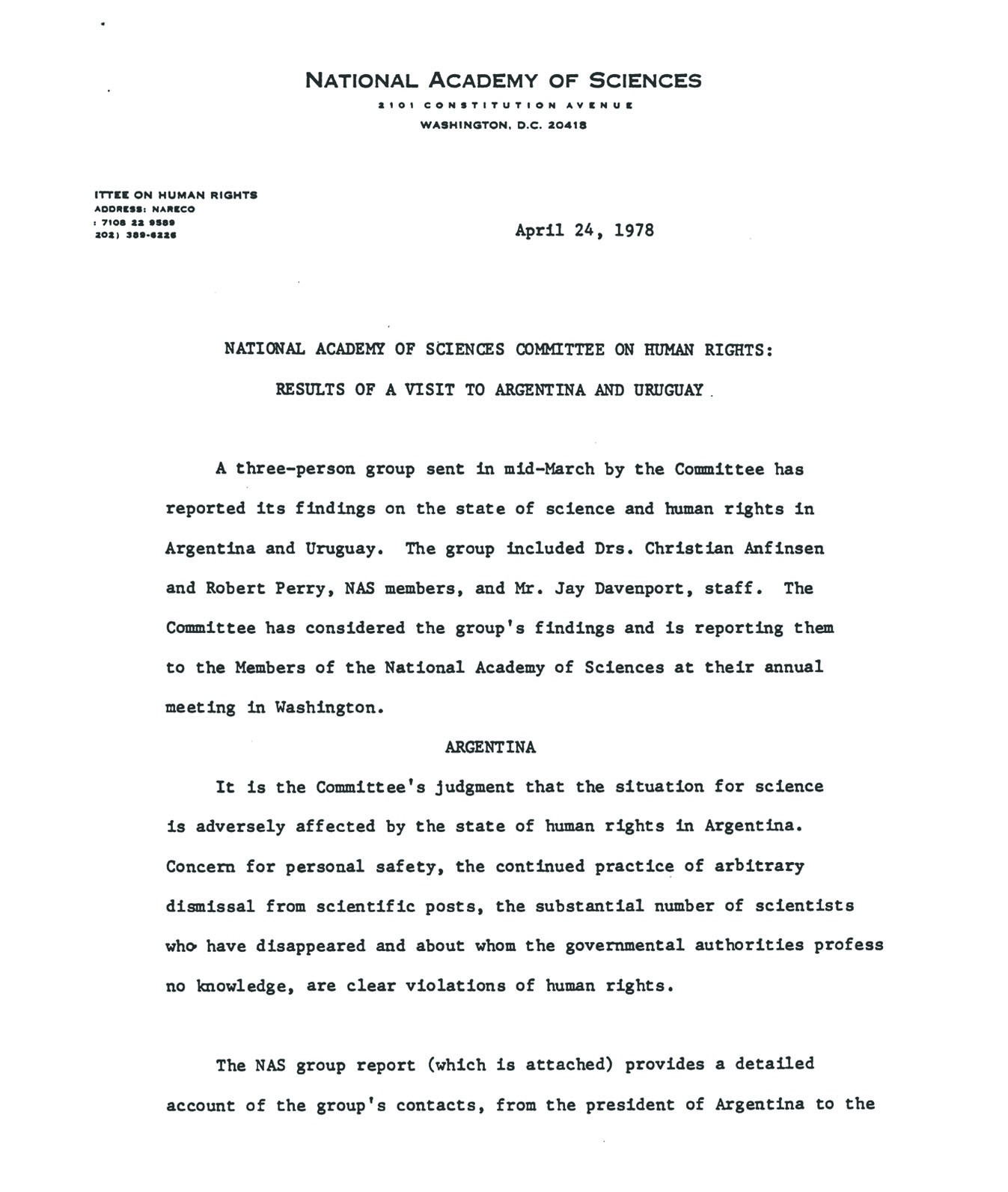...
Igor Uspensky was a Russian entomologist who wished to emigrate to Israel with his wife Inna and son. Uspensky was the senior research scientist of the Martsinovsky Institute of Medical Parasitology and Tropical Medicine in Moscow from 1961-1982. During this time, the Soviet Union attempted to limit the emigration of Jews. The family’s 1981 application was denied by Soviet authorities on the grounds that Inna’s brother Alexander Ioffe, a mathematician, had access to state secrets. Ioffe was allowed to leave in 1988, however, and the Uspenskys applied for emigration again, which they secured in 1989. Igor Uspensky joined the Hebrew University in Jerusalem.
| Caption |
|---|
| Credit |
|---|
National Library of Medicine |
...
\Brazil’s Institution Act No. 5 of December 1968, gave the military dictatorship broad powers to detain, dismiss, or censor anyone who it thought challenged its legitimacy, including scientists like Isaias Raw, Alberto Carvalho da Silva, and Hélio Lourenço de Oliveira. Raw directed the Brazilian Foundation for the Development of Science Teaching and established the Carlos Chagas Foundation. Carvalho da Silva researched animal nutrition as a professor at the University of São Paulo (USP) and Lourenço de Oliveira served as a Dean at USP. All of them were able to leave Brazil to, respectively, Israel, the U.S., and Egypt, but they all returned to Brazil eventually, making further significant contributions to medical science and education in their own country.
| Caption |
|---|
| Credit |
|---|
National Library of Medicine |
...
Nihat Sargın was a surgeon turned political activist in Turkey. He became the secretary general of the Turkish Workers’ Party in 1975. After a military coup in 1980, the Turkish constitutional court banned the party, and Sargın left Turkey for exile in Brussels. When he returned to Turkey in November 1987, he was promptly arrested. After three years in prison with no trial and 31 rejected applications for his release, Sargın undertook a hunger strike. He was released after his 19th day on strike in April 1990. He remained in Turkey until his death in 2010.
| Caption |
|---|
| Credit |
|---|
National Library of Medicine |
...
In March 1978, Anfinsen, Robert Perry, and Jay Davenport made a trip to Argentina and Uruguay as representatives of the Committee on Human Rights of the National Academy of Sciences. While they participated in scientific conferences, believing in the free flow of knowledge, they also met with government officials from both countries about scientists being held in prison or becoming “the disappeared”—those in Argentina who were taken by government forces and never returned.
| Caption |
|---|
| Credit |
|---|
Courtesy of the National Academy of Sciences |
...
While they were in Argentina, physicist Beatriz Iparraguirre, a prominent research hematologist, was kidnapped by armed men who identified themselves as police officers during the middle of the night. Anfinsen’s group and others lodged protests and urged inquiries. She was released on the streets of Buenos Aires a week later. Anfinsen wrote that this event caused him to take up smoking again. Iparraguirre went on to become the president of the Argentina Society of Hematology.
| Caption |
|---|
| Credit |
|---|
Courtesy of the National Academy of Sciences |
...






